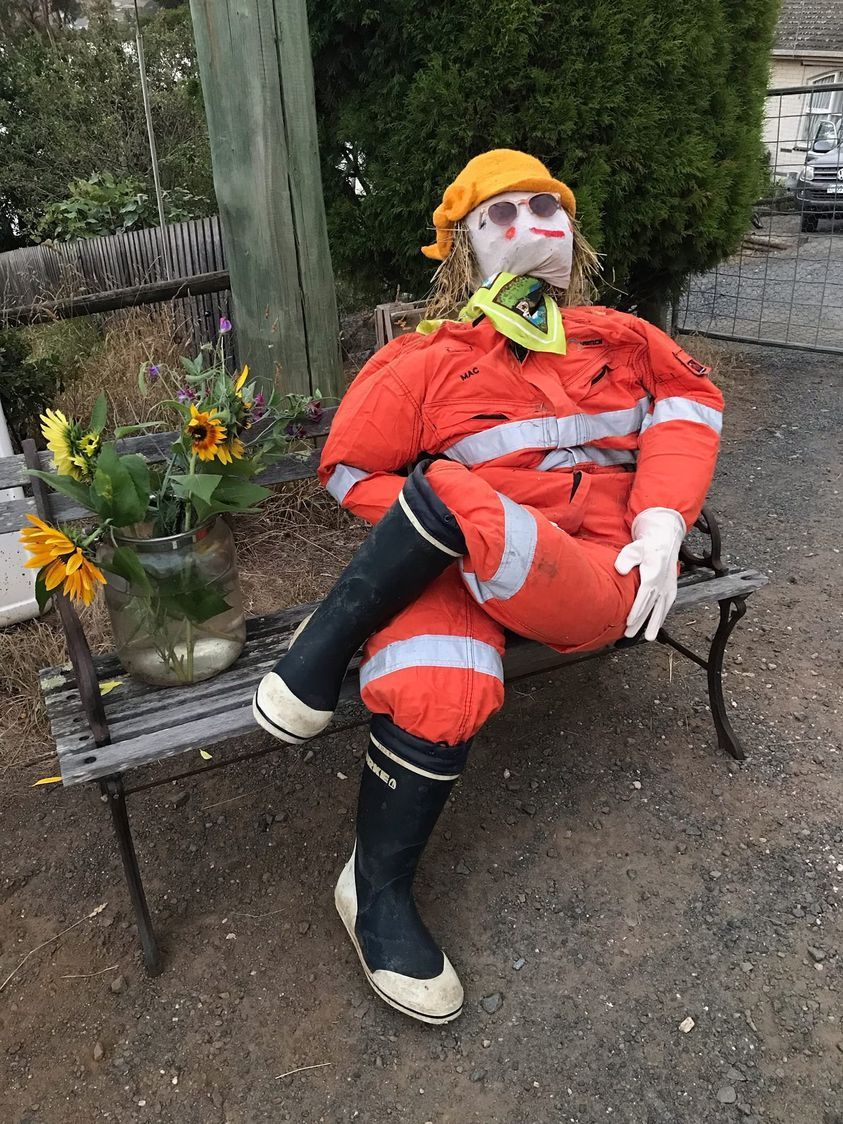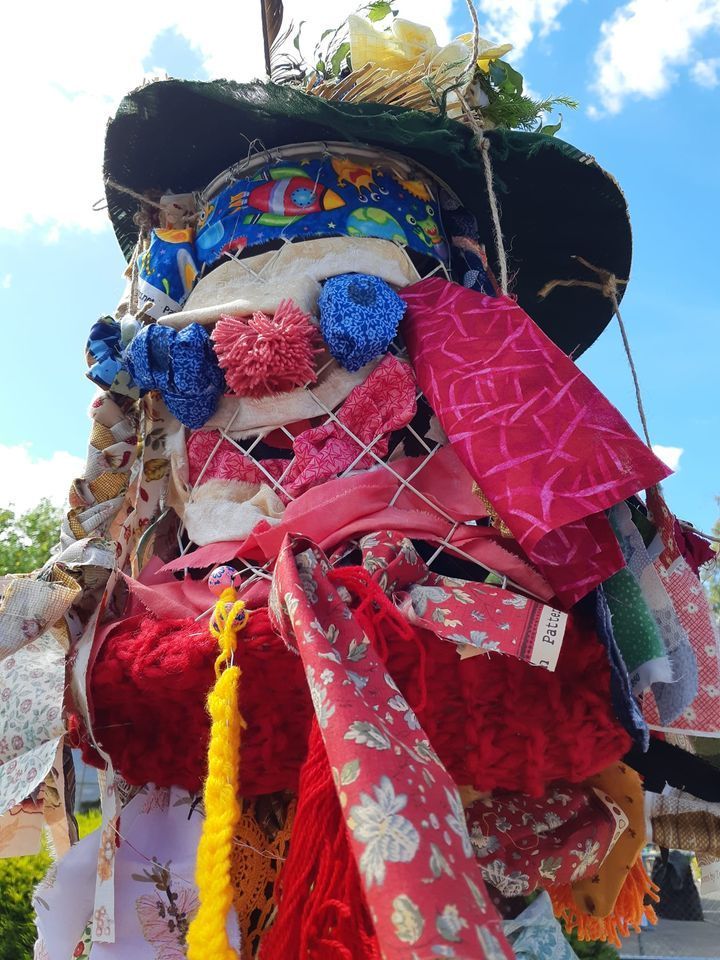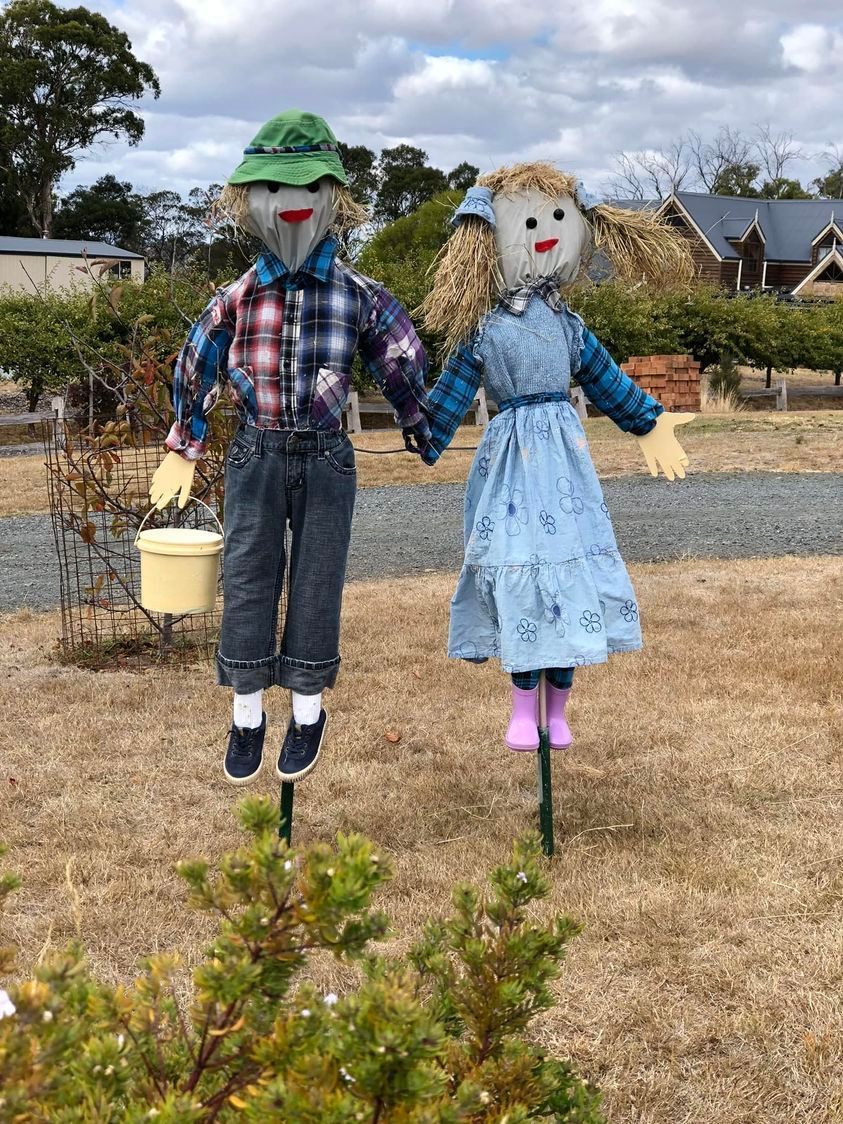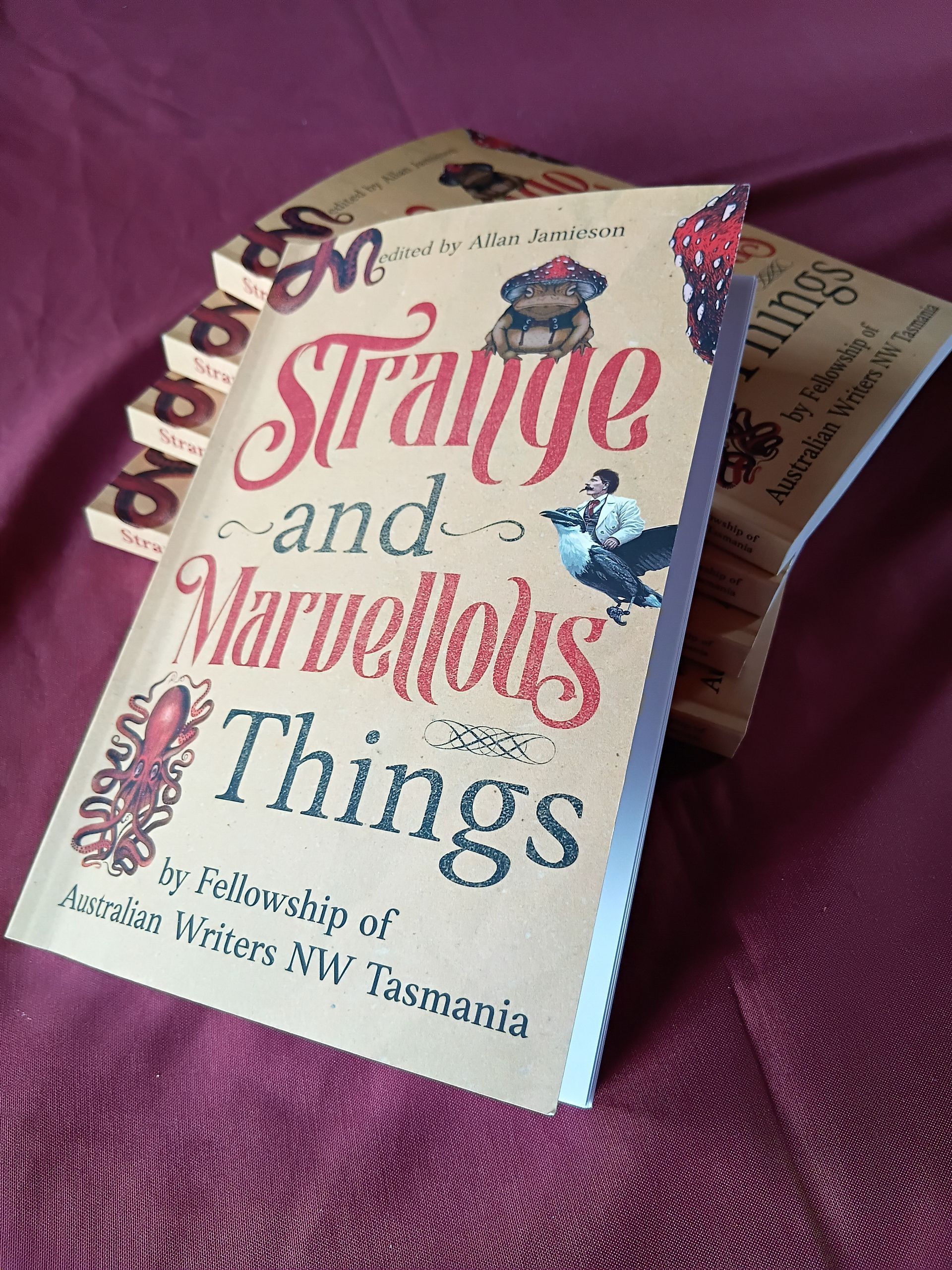My community’s Garden Club has embraced the idea of scarecrows as a part of its Harvest Festival this year. First introduced pre-COVID several scarecrows stood sentinel in the grounds of our then café. Sadly, that business has now closed, but the scarecrow idea has taken off and a walk or drive around our community has seen some impressive and imaginative renditions popping up in driveways and along fence lines.
At the Market last weekend our local champion of the Arts, Di, introduced a community scarecrow on a frame created by our local Men’s She. She invited all the locals and market visitors alike to add a piece of ribbon or fabric to the structure to dress and decorate it. It’s made for a very colourful version, albeit of indeterminate age or gender.
Scarecrows have a lengthy history, going back to Ancient Egypt’s early farmers who also wanted to protect their crops from marauding birds, but farmers throughout Europe and North America adopted the practice with varying degrees of success, since birds everywhere quickly worked out the sedentary pretend human figure provided no serious threat.
These colourful structures may not have been too efficient at scaring the crows but American author Frank Baum is responsible for possibly the most famous scarecrow of all in his Wizard of Oz books. Along with the Tin Man and the Lion, the Scarecrow was one of Dorothy’s companions that helped her to overcome the wicked witch, and find her way home to Kansas – a state renowned for its agricultural sector.
In the early 1990s rural villages in the North of England hit on the idea of a scarecrow festival, in part perhaps to revive their flagging communities but which have since become tourist attractions.
Maybe the scarecrow tradition will become a fixture in our East Tamar community as well. It’s certainly proved popular with residents this year as the photos suggest – all of which were initially posted to the community's Facebook page. Credits are therefore unknown.





